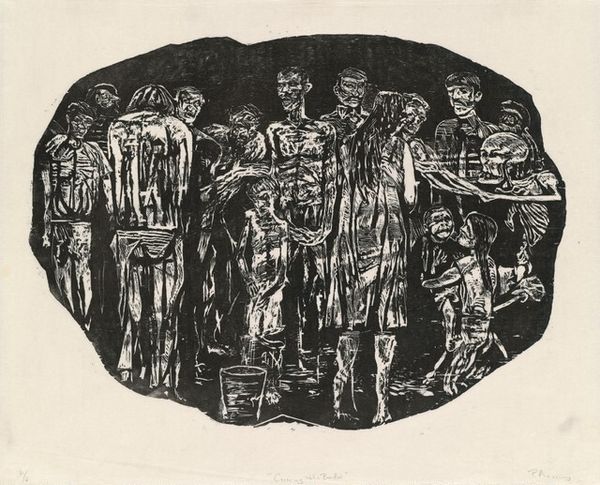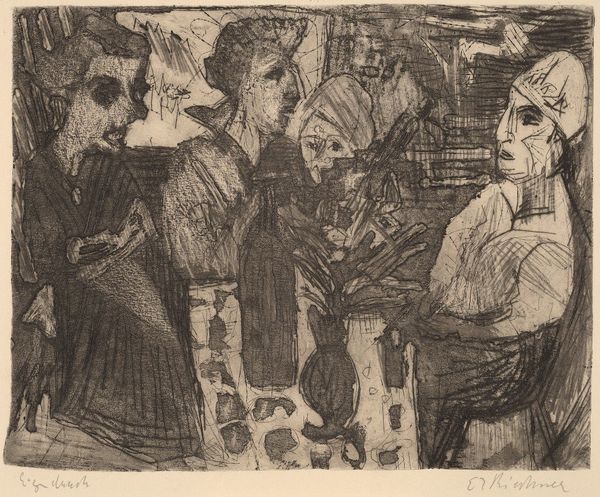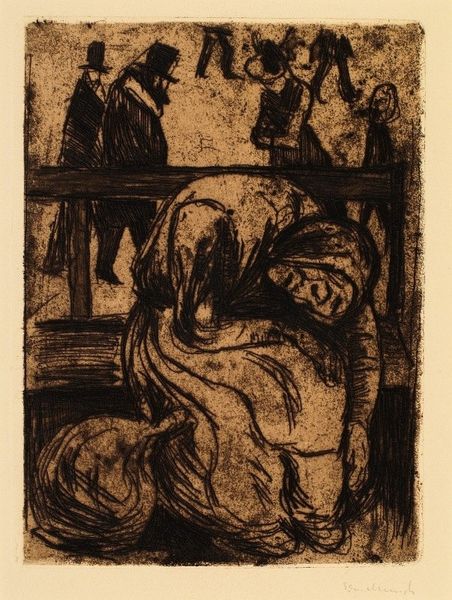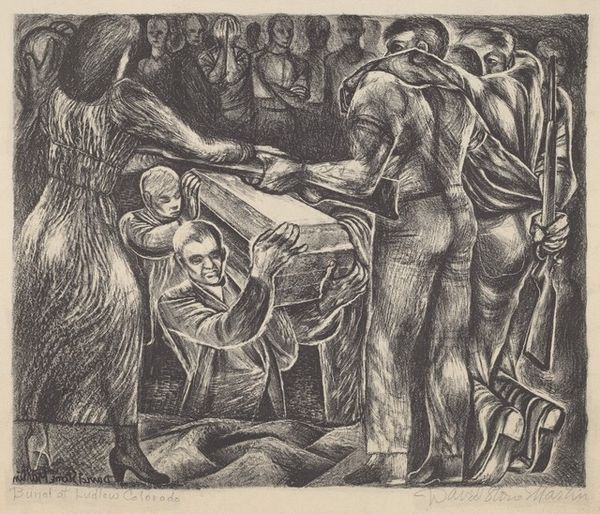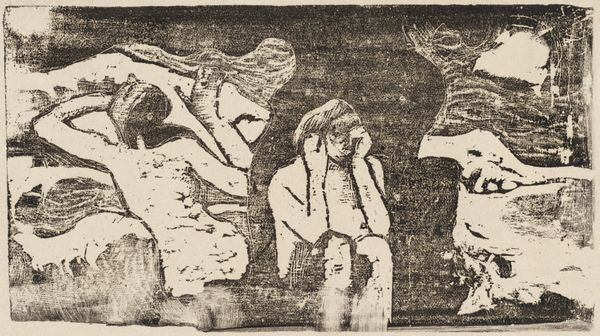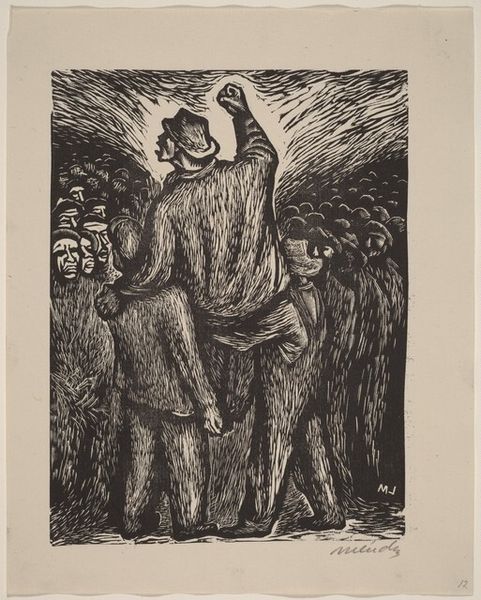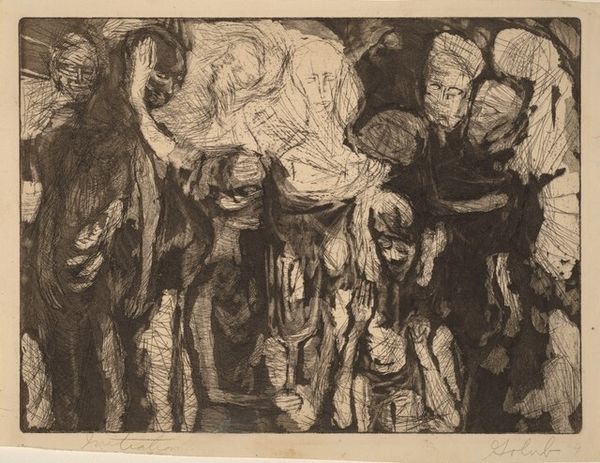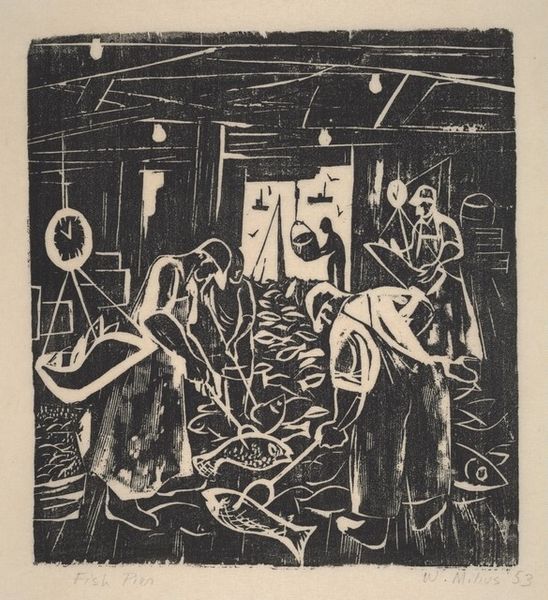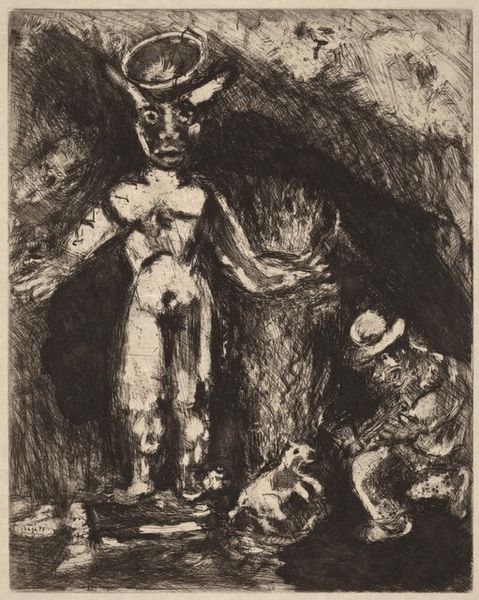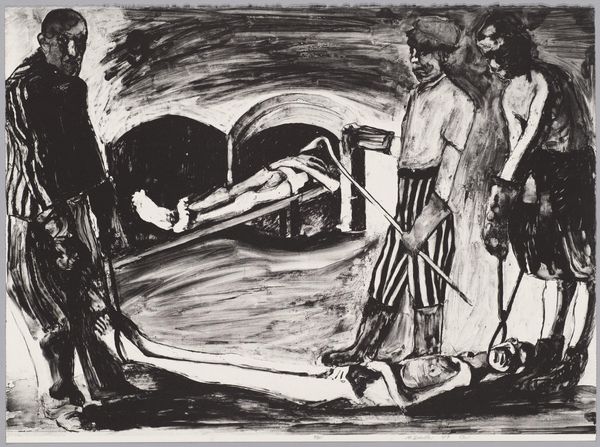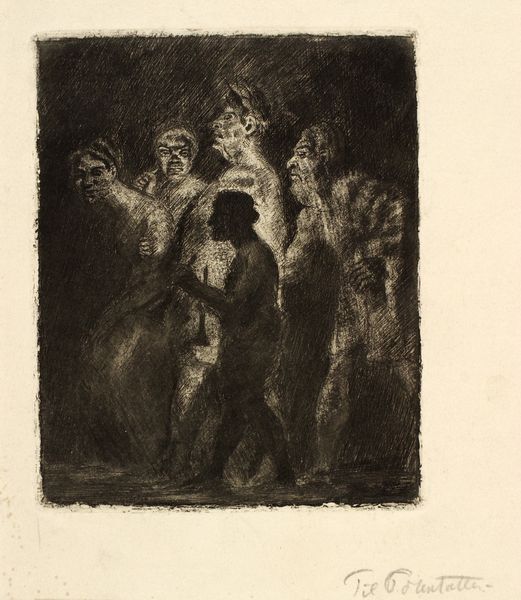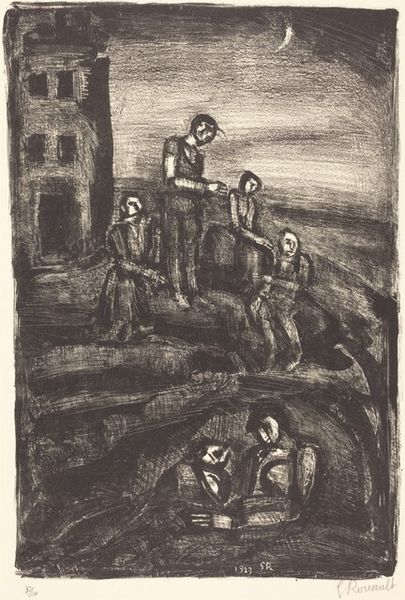
Dimensions: Image:340 x 430mm Sheet:412 x 520mm
Copyright: National Gallery of Art: CC0 1.0
Curator: Here we have John Thomas Biggers' "Composition," a print rendered in ink, dating to 1952. Editor: It strikes me immediately as heavy with weariness. The figures seem burdened, heads bowed low. It’s stark and somber. Curator: Indeed. Biggers was deeply invested in depicting the Black experience in America, often reflecting the socio-political climate. His work promoted self-determination and cultural pride during the Civil Rights Movement. The Black Arts Movement certainly resonated through his career. Editor: Look at the hands—so prominent, almost skeletal. Hands that have worked, created, and endured. The way the light catches them amidst the darkness feels symbolic, a glimmer of hope perhaps. It could be about the endurance of cultural heritage. Curator: Absolutely, and Biggers explored themes of community, family, and resilience, consciously rejecting negative stereotypes prevalent in mainstream media. Consider also the composition itself – the figures are densely packed, their forms overlapping, conveying both unity and the claustrophobia of their circumstances. Editor: And their downcast eyes, I wonder what it meant to the communities of the time to see figures resembling themselves so truthfully represented? What stories did it provoke or make viewers think of at the time of release and display? Curator: The image operated in public discourse both as a reinforcement of common struggles, but also as a reminder that these were scenes from their life, rather than imagined circumstances to which some might not understand. Its availability to Black audiences promoted self determination by offering artistic representation of that struggle in daily life, allowing for communities and organizers to feel that sense of unity and the confidence that stems from such collective empathy. Editor: So, beyond the literal figures, the drawing seems to act as a collective reminder of both loss and the path to cultural advancement in times of public inequality. The print reminds communities that the only path to that future goes directly through communal empathy and understanding. Curator: I agree completely; the cultural and socio-political impact this piece had at the time certainly reverberates even now. Editor: Absolutely, seeing it with new eyes really brings so much weight to its imagery that otherwise may be hard to fully interpret at face value.
Comments
No comments
Be the first to comment and join the conversation on the ultimate creative platform.
